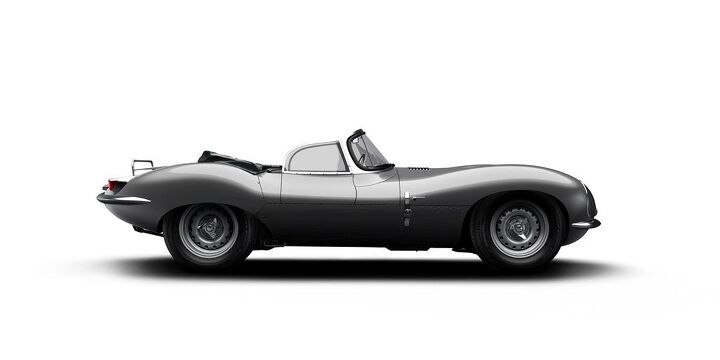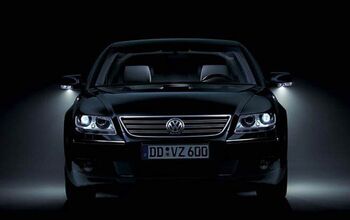Jaguar XKSS to Rise From the Ashes
When fire destroyed Jaguar’s Browns Lane plant on Feb. 12, 1957, nine of the 25 existing XKSS models were consumed by flames. The spartan roadster — a road going version of the famous D-type race car — went on to become a legend and the remaining 16 examples are among the most valuable collector cars on the market.
Now, the lost nine are going to rise from the ashes, as Jaguar plans to use their serial numbers on a limited run of exact replicas, mirroring last year’s E-type Lightweight.
The interest among privateer teams wasn’t sufficient to unload them all, and so a clever plan was devised. Remaining D-types will be fitted with some luxury items – like second seat and door, windows, windscreen with wipers or even a folding roof and bumpers – and sold as roadgoing sports cars, perfect for “weekend racers” in America.
The new car, called the XKSS, was eligible for the production sport car class, and represented a perfect choice for wealthy Americans who wanted to drive their own cars to the track, race them, and then drive them back home again.
The fascinating story and great racing pedigree of the XKSS guaranteed it a place in the Pantheon of automotive legends. And with the recent surge in price and popularity of classic sports cars, the value of the legendary racing Jag for the street shot upwards as well. According to data from Hagerty Insurance, you could buy a concours condition XKSS for a measly $2 million in 2006. Now, the same car would cost you a whopping fifteen million dollars.
Such demand, which may or may not be result of an investment bubble, makes for a perfect time to recreate the nine cars that were lost. And Jaguar, encouraged with the success of last year’s series of E-type Lightweight continuation cars, decided to do just that. All nine cars will be “constructed to the exact specifications as those 16 first made in 1957,” states the company’s website, and will be offered to select customers at a reasonable (compared with what the original would fetch) price of “over Ł1 million” (more than $1.5 million).
It is expected that even these “continuation cars” will make for a sound investment, even though, if the prices of DB4 GT Zagato Sanction II cars (finished from the existing parts in 1988, a quarter century after the originals were built) are anything to go by, their prices will never reach the astonishing heights of the original 16 cars.
[Images: Jaguar Land Rover]
More by Vojta Dobe
Latest Car Reviews
Read moreLatest Product Reviews
Read moreRecent Comments
- Ltcmgm78 Just what we need to do: add more EVs that require a charging station! We own a Volt. We charge at home. We bought the Volt off-lease. We're retired and can do all our daily errands without burning any gasoline. For us this works, but we no longer have a work commute.
- Michael S6 Given the choice between the Hornet R/T and the Alfa, I'd pick an Uber.
- Michael S6 Nissan seems to be doing well at the low end of the market with their small cars and cuv. Competitiveness evaporates as you move up to larger size cars and suvs.
- Cprescott As long as they infest their products with CVT's, there is no reason to buy their products. Nissan's execution of CVT's is lackluster on a good day - not dependable and bad in experience of use. The brand has become like Mitsubishi - will sell to anyone with a pulse to get financed.
- Lorenzo I'd like to believe, I want to believe, having had good FoMoCo vehicles - my aunt's old 1956 Fairlane, 1963 Falcon, 1968 Montego - but if Jim Farley is saying it, I can't believe it. It's been said that he goes with whatever the last person he talked to suggested. That's not the kind of guy you want running a $180 billion dollar company.




































Comments
Join the conversation
I doubt any of them would come to the US. They are not "new" cars anyway, they were originally built in 1956. Granted, recreated now but the title would date from 1957.
England has heaps of niche cars that dont come to the US. There's heaps of cottage industries that make half a million pound sterling works of art and they will sell out before they are even put out a press release. There's more than nine rich English billionairies who would want a million dollar bauble to put in their living room of their 50 bedroom mansion.